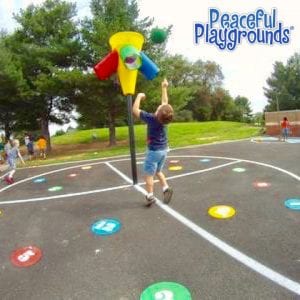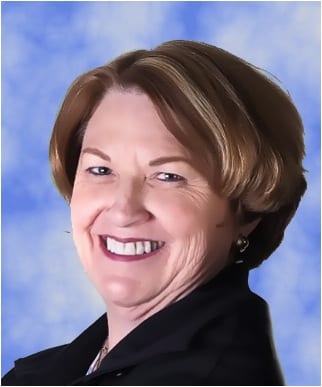A Plan for Playground Games – March 2005
Melinda Bossenmeyer Creates Peaceful Playgrounds Recess Program

Unique playground games
Too often, children are sent from the playground to the principal’s office or the school nurse.
Former physical education teacher and elementary school principal Melinda Bossenmeyer launched Peaceful Playgrounds 15 years ago to address discipline problems and advance social and motor skills development.
The Peaceful Playgrounds concept takes a resource most playgrounds already have – open space – and transforms blacktops and fields into play areas for different age groups with activities such as tetherball, wall ball, and Frisbee golf.
About 8,000 schools in the United States and Canada have implemented the program to some degree, according to Bossenmeyer. Starting up the program takes about six weeks.
Kits sell for $5995 and include templates for marking the playground, activity guides, and staff training materials. Kits are available for age groups from pre-school to the sixth grade. At many schools, parents have painted the play areas, spending about $l150 on paint, Elementary School Principal, Bossenmeyer says.
According to a study conducted by Bossenmeyer, positive results have been seen in many schools using the program. At E. Hale Curran Elementary School in Murrieta, California, injuries on the playground requiring medical attention fell by 66 percent, and discipline referrals to the principal from the playground and classroom decreased 64 percent.
After six months using the program, as many as 80 percent of children voluntarily participate in game play. “Today, especially in urban schools, it’s not unusual to have 300 kids on the playground at once,” Bossenmeyer says.

Founder/President Dr. Melinda Bossenmeyer
Five Components of a Peaceful Playground
- Implement a consistent set of rules. Without consistent rules, children may play by different rules or make up new rules themselves. Children should be taught the rules at the beginning of the school year and be expected to follow them throughout the year.
- Teach children to resolve conflicts. When they are taught conflict resolution skills, children can resolve most confrontations without adult intervention. The Peaceful Playgrounds program teaches children to walk, talk or rock—walk away from a dispute, talk it out, or settle it by playing “rock, paper, scissors.”
- Add game markings to open space on the playground. By adding game markings to open space, schools can affordably add new activities to their playgrounds.
- Make sure there is enough playground equipment. Peaceful Playgrounds creator Melinda Bossenmeyer recommends having at least one piece of equipment (balls, jump ropes, etc.) for every 10 children on the playground, or one piece of equipment per game. Playground equipment is as important to recess as pencils and paper are to the classroom.
- Have consistent expectations. After teaching students the new games, make sure they follow the rules. Playground monitors, as well as teachers and principals, should know the rules.


